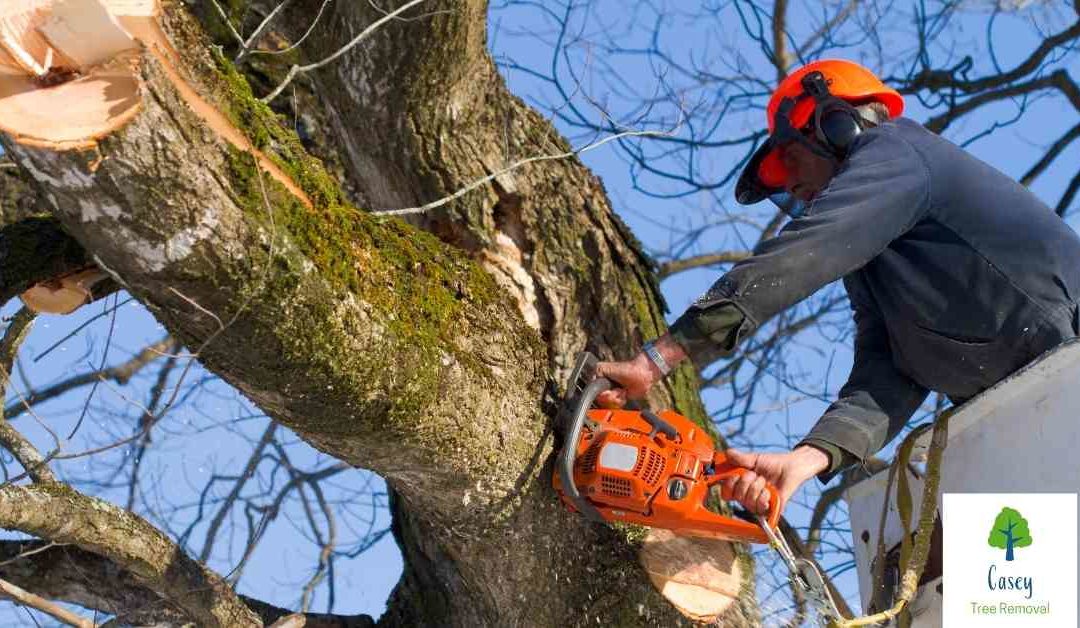When discussing our pruning practices, we prefer to use descriptive and proper terminology to describe the factors involved with pruning various parts of trees. So, let’s move into the question, what is tree pruning?
The Different Types of Tree Pruning
The most common type of pruning involves removing branches that are diseased, visibly broken, dying, or dead. Certified Arborists have a keen eye for recognizing these types of branches whether the leaves are on the tree or not. It becomes second nature for arborists to identify and remove these types of branches in their day-to-day routine.
By removing dead, diseased, or broken branches, tree pruning assists with opening a tree’s crown to allow more air movement and additional light penetration. Removing foliage and branches also manages the risk of branch failure by reducing the weight of extended branches and limbs of the tree. There are limits for arborists as to how much pruning can be done for a tree. The general rule of thumb is to remove less than one-fourth of the live foliage of the tree.
Storms often give homeowners insight into which branches are potential threats to buildings, signs, electrical wires, and streetlights. Unfortunately, these may not be fully realized until branches have failed. Ideally, Certified Arborists can deal with poorly attached branches before they can cause harm to the tree and/or damage property. Removing these branches improves the structural integrity of the tree itself and is another way to help the tree thrive in the landscape for many years. One structural pruning method involves cutting branches back to lower, lateral branches which maintain the dominance of the tree’s central leader. This branch reduction pruning process will not create the same problems as tree topping which uses large, indiscriminate cuts at the top of a tree. Rather, structural pruning improves the future growth of a tree by managing branch density and branch diameter ratios within the tree so it can provide shade and beauty for years to come!
Other Tree Pruning Types
When trees are planted in tight spaces or too close to buildings, they may need special pruning to maintain appropriate clearance from buildings. Areas like courtyards, patios, overhead lights, or other landscape structures will need special clearance pruning to maintain the space needed to avoid maintenance problems.
A specialized pruning type is topiary pruning. This pruning involves certain types of trees or shrubs pruned to perfection and tend to be eye-catching. If you are considering a topiary plant in your landscape, regular maintenance will be required to keep its shape.
Over time, growing branches may obstruct views or hang low over the yard. Specialized pruning regains the wanted vista that has become blocked by tree branches. The solution may include pruning out whole branches, or thinning a tree out, or pruning off low branches to help you view the scenery you want.
The objective of what the pruning will accomplish helps guide why various branches are pruned off. At Casey Tree Removal, our team of Certified Arborists wants to improve the health of your trees. Because of this, we choose the proper pruning methods based on the type of tree, the season, and your objectives. Call us today to get your tree pruning in the schedule.
Casey Tree Removal – All Tree Services including Tree Cutting, Tree mulching, Tree Trimming, Stump Grinding, Tree Pruning, Stump Removal, Emergency Tree Removal Experts In Melbourne!
Click here to read more articles regarding tree removal & related services.
If you are in Narre Warren and looking for Casey Tree Removal, below is the best way to visit us.



Recent Comments